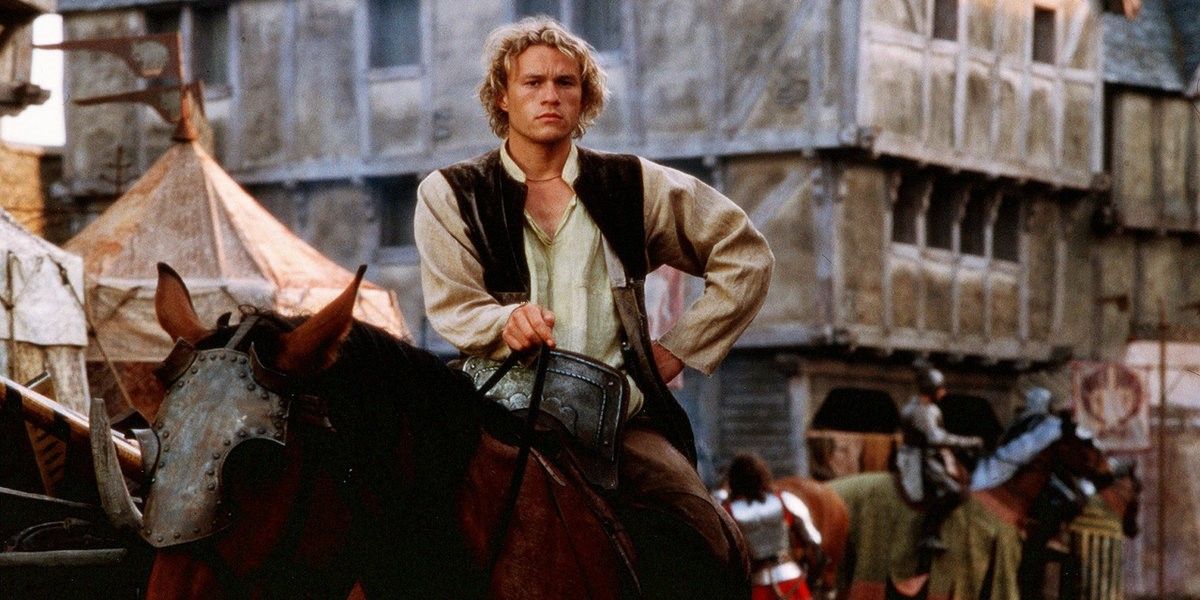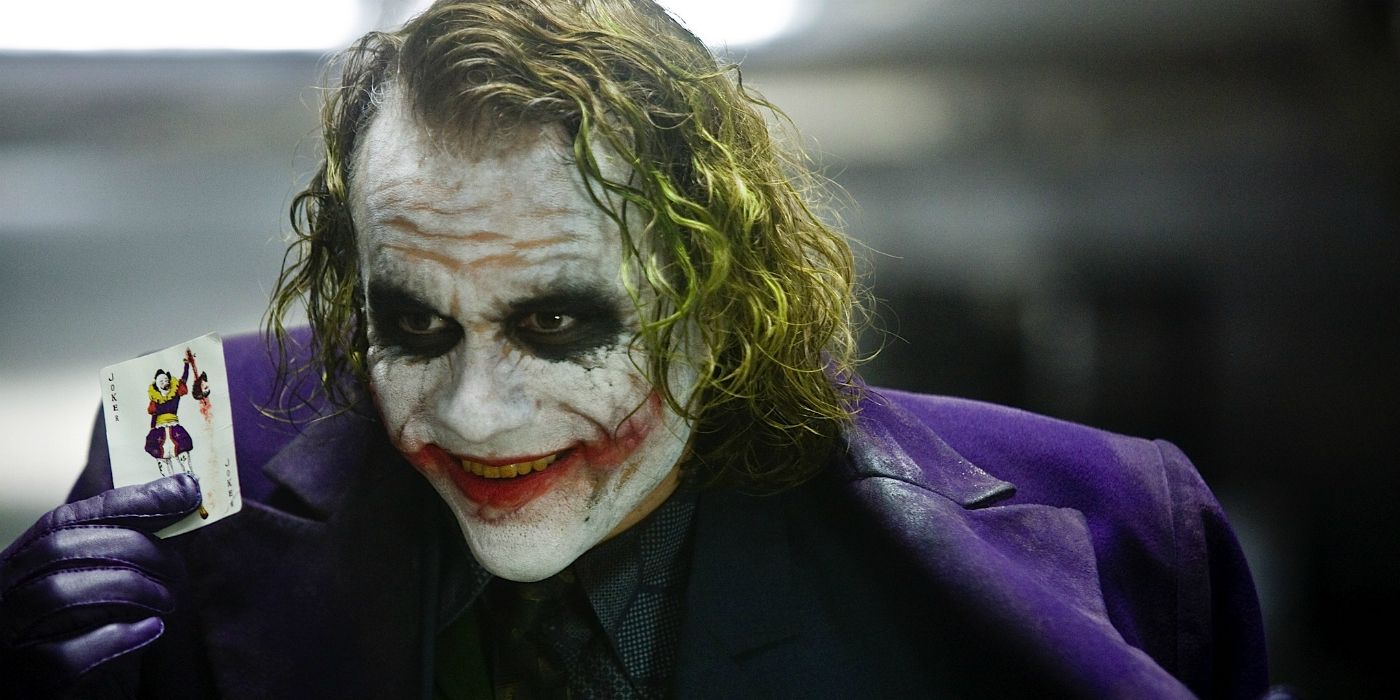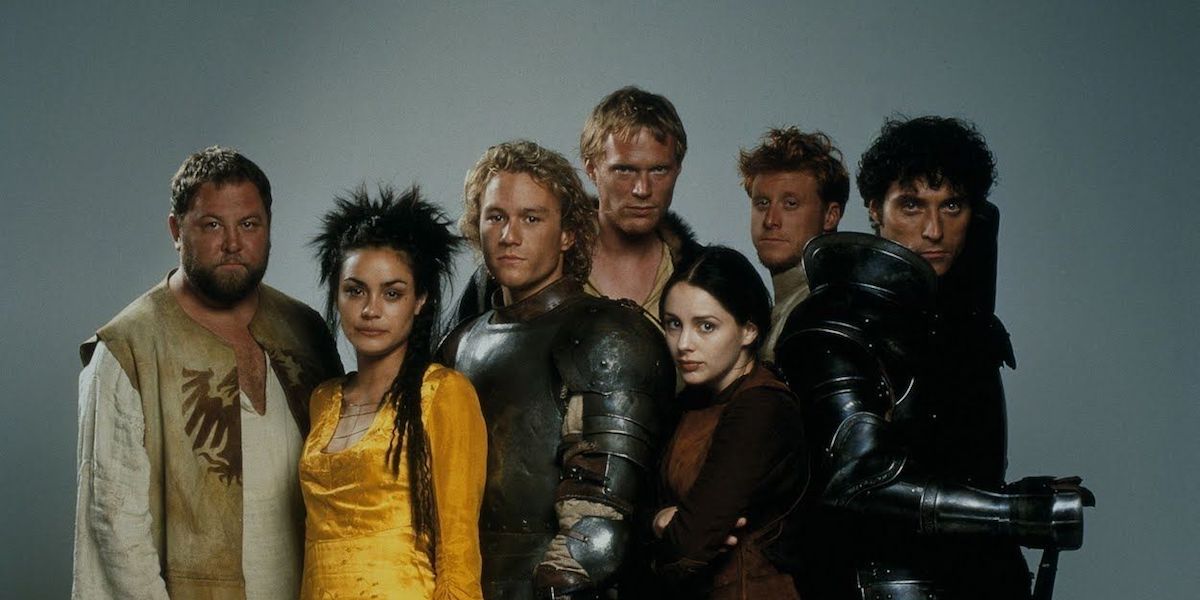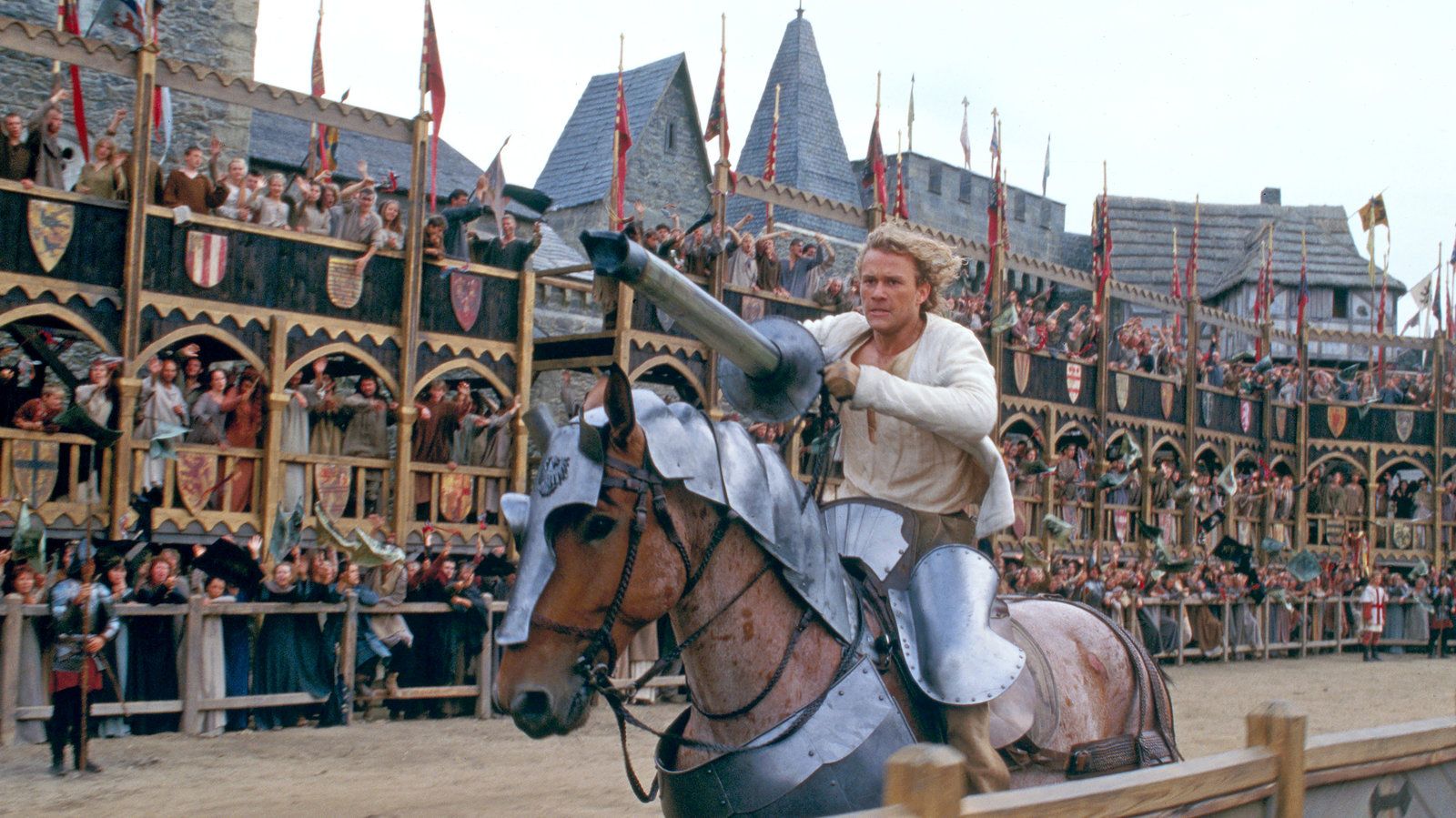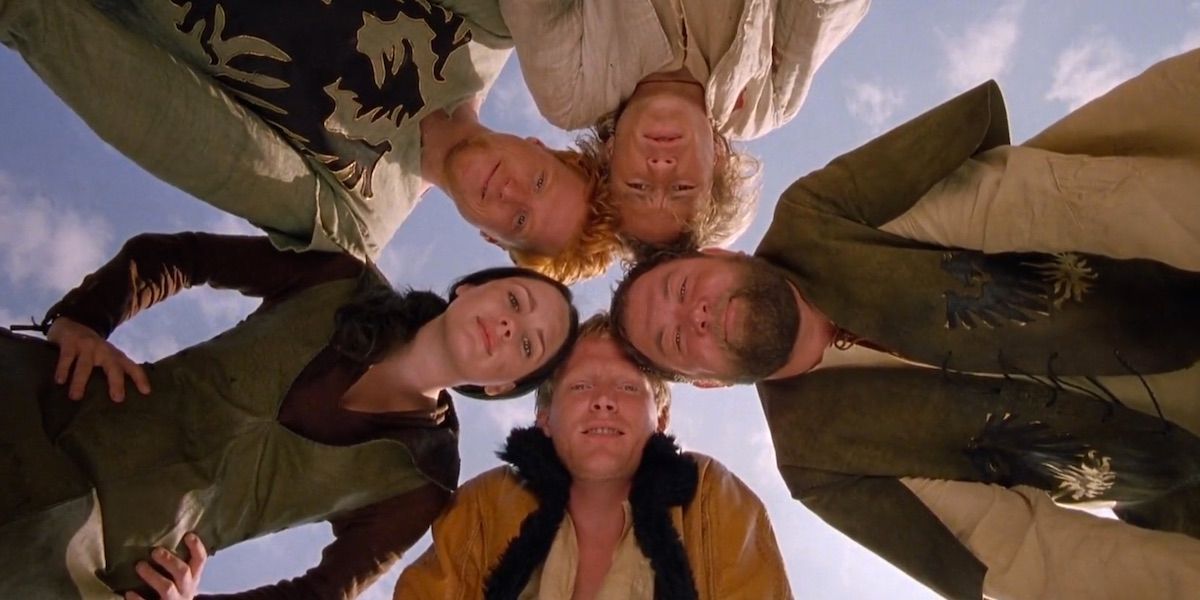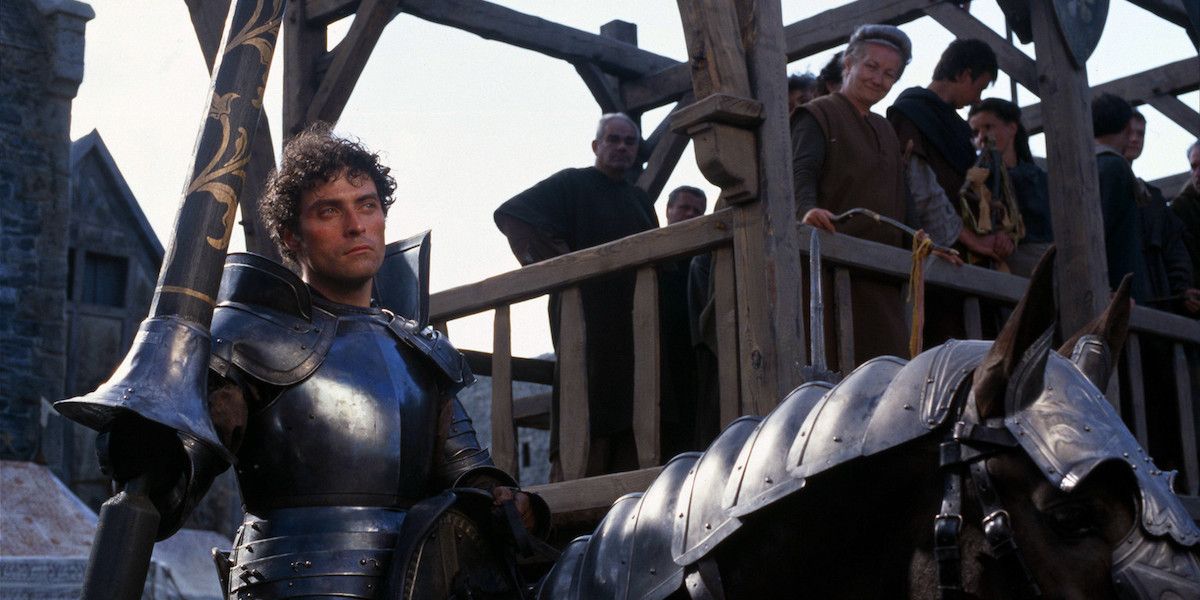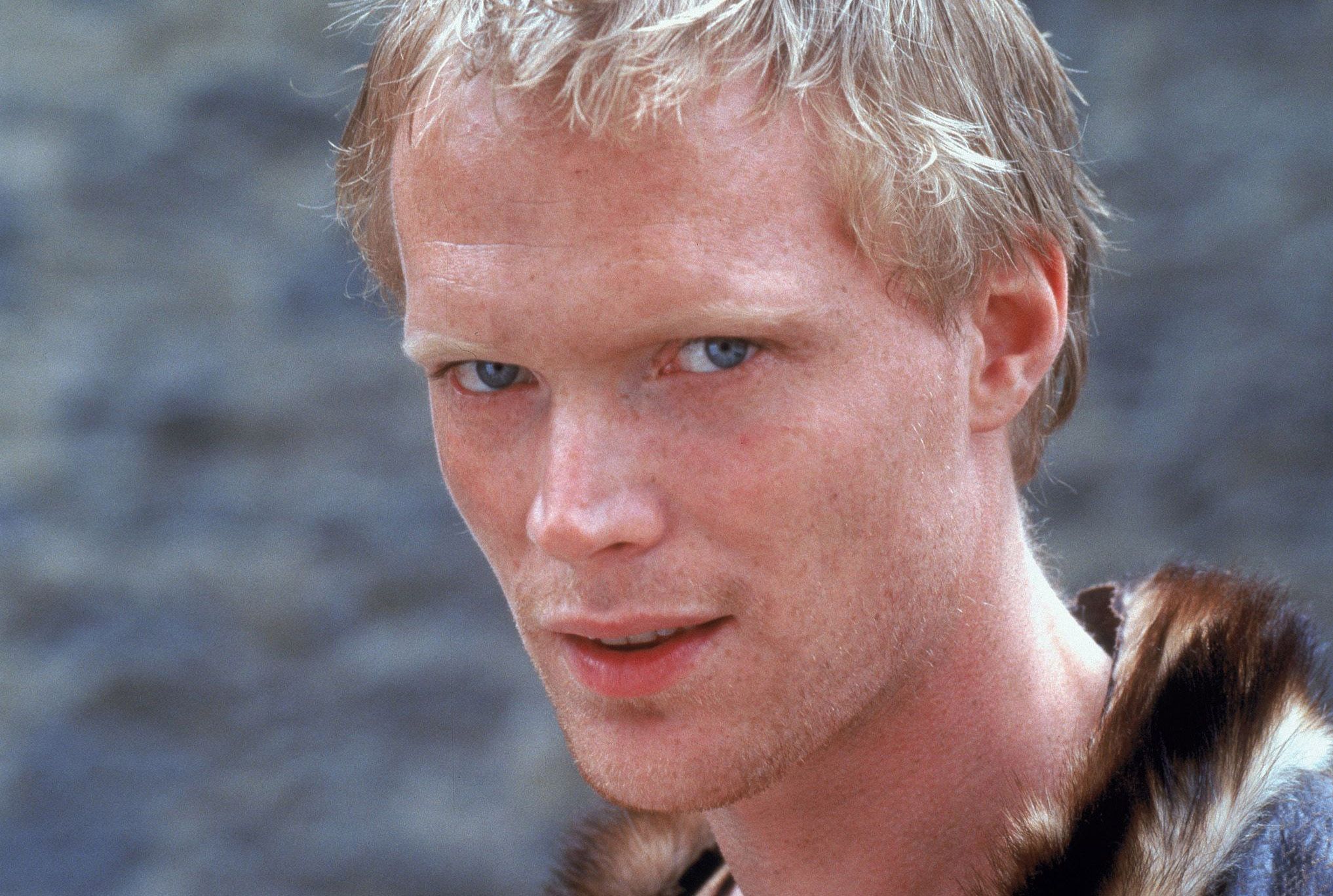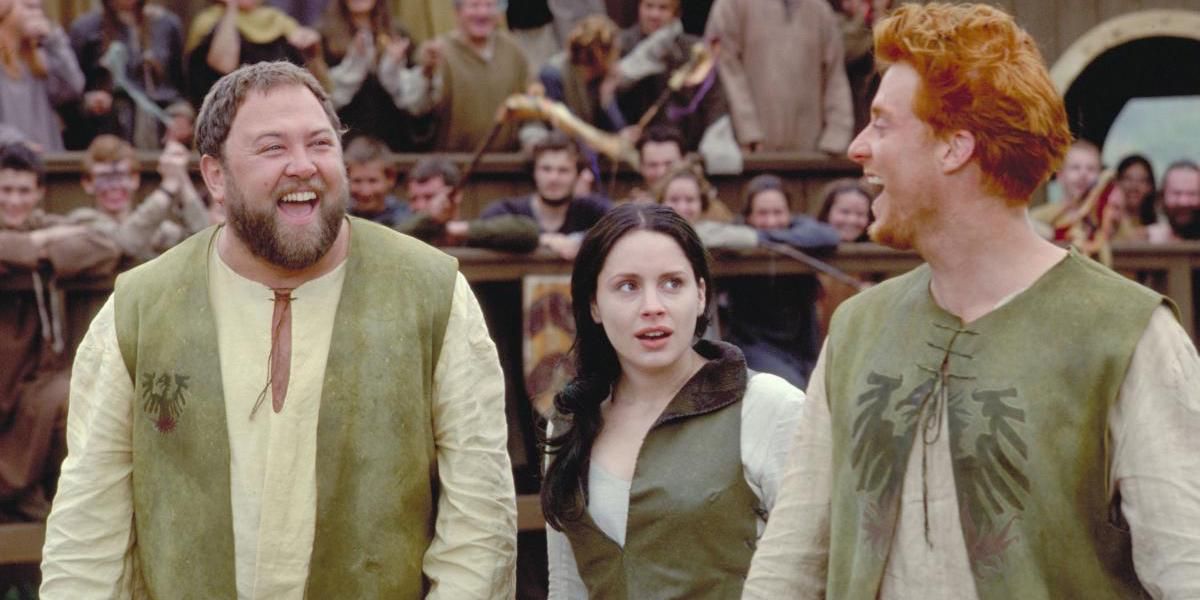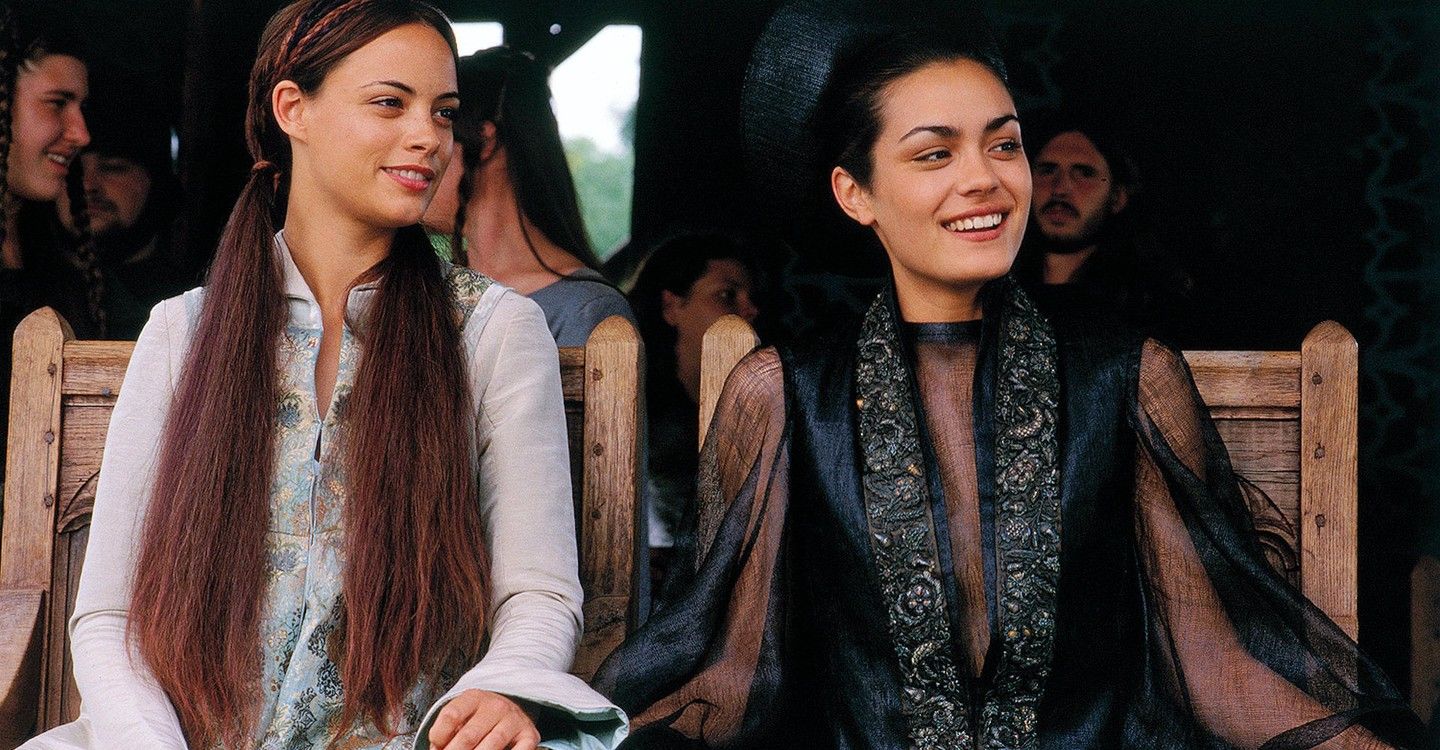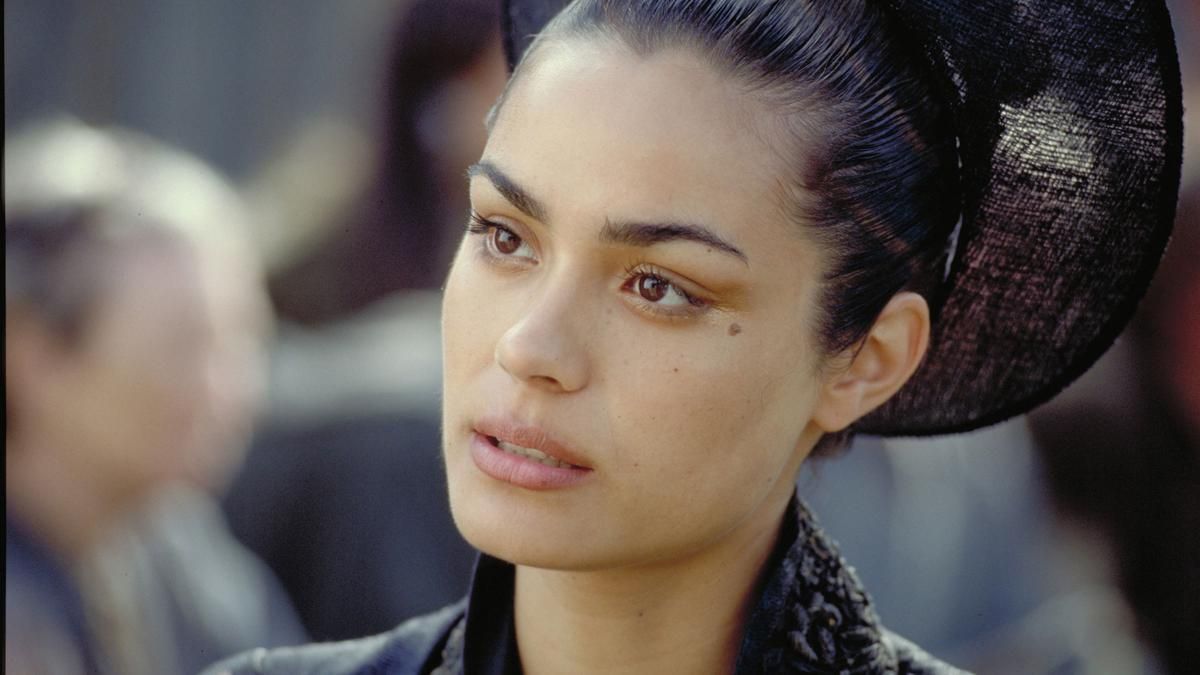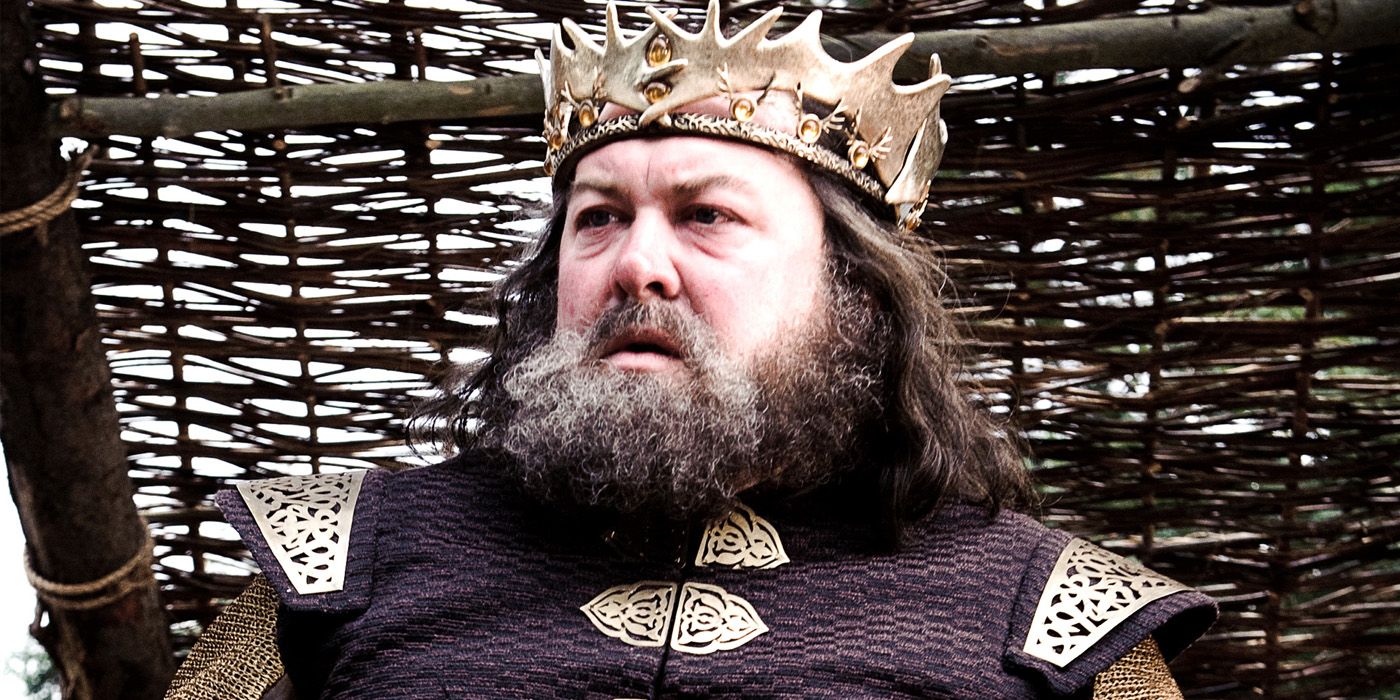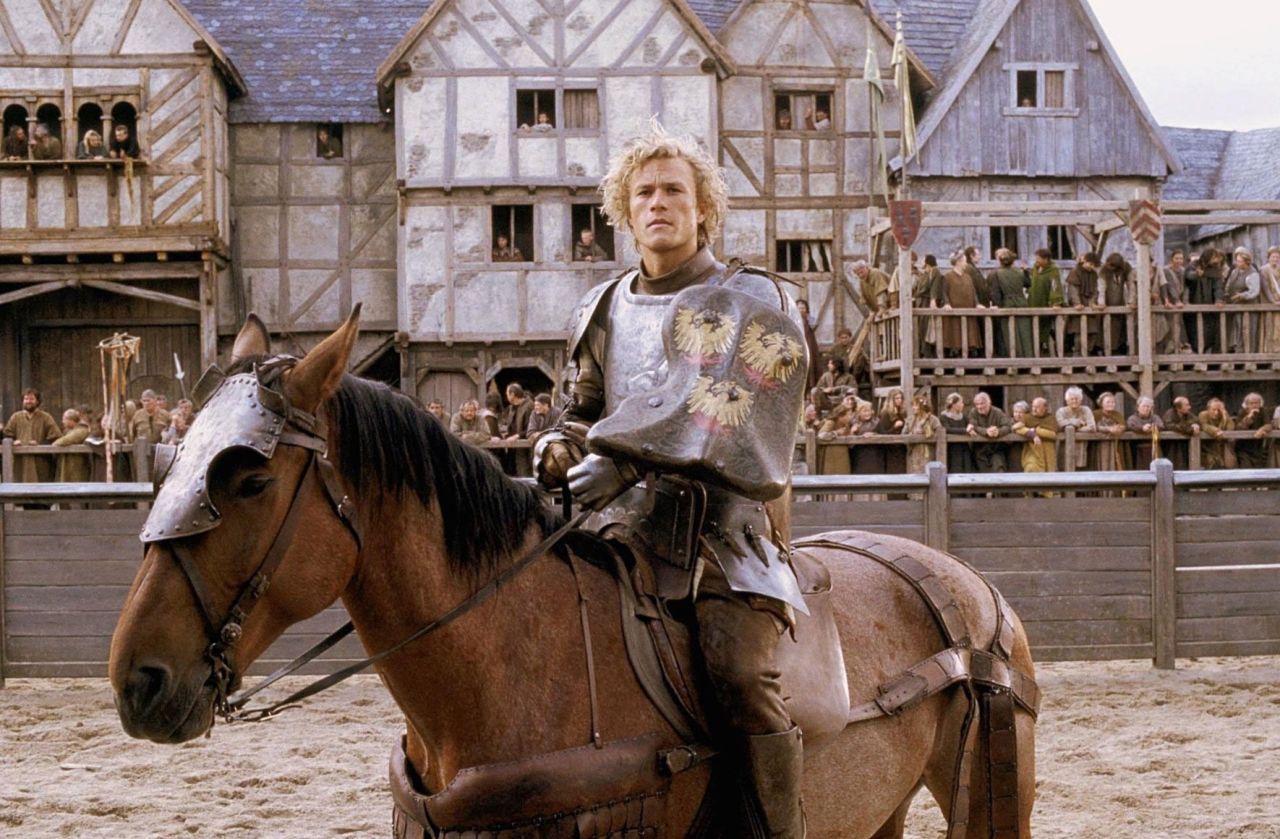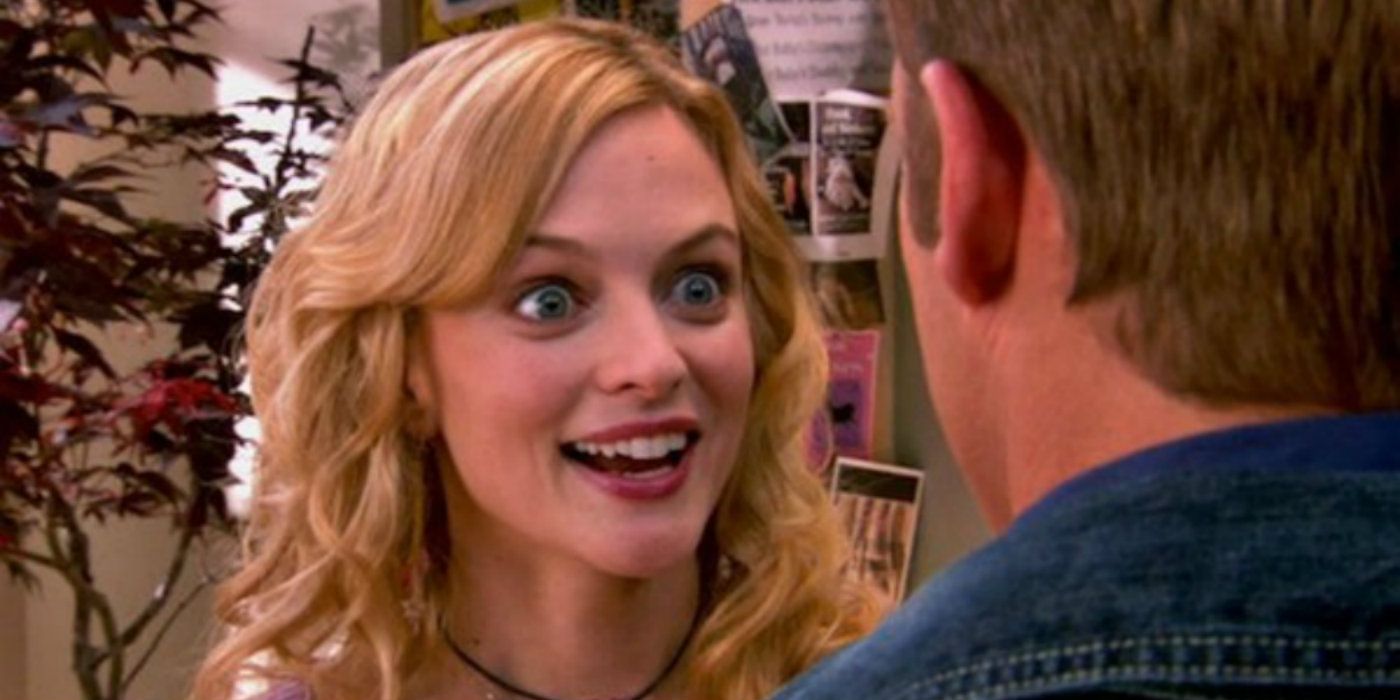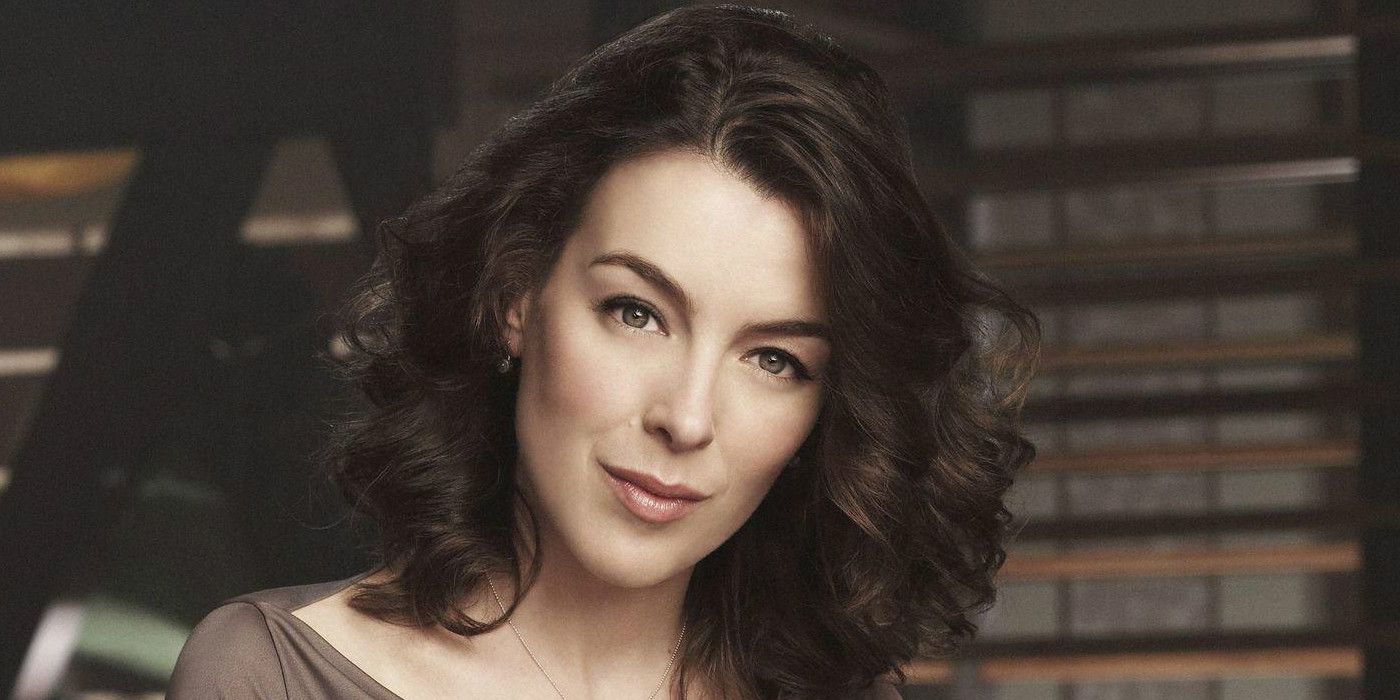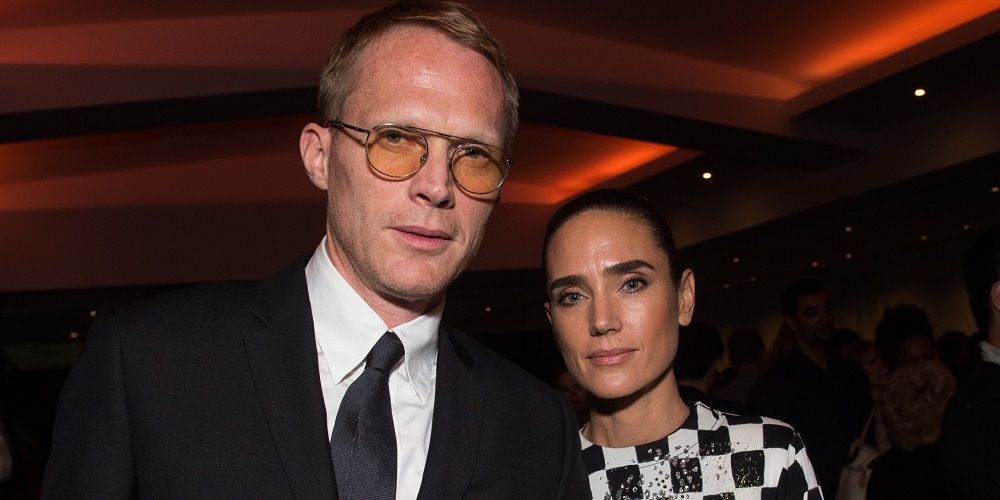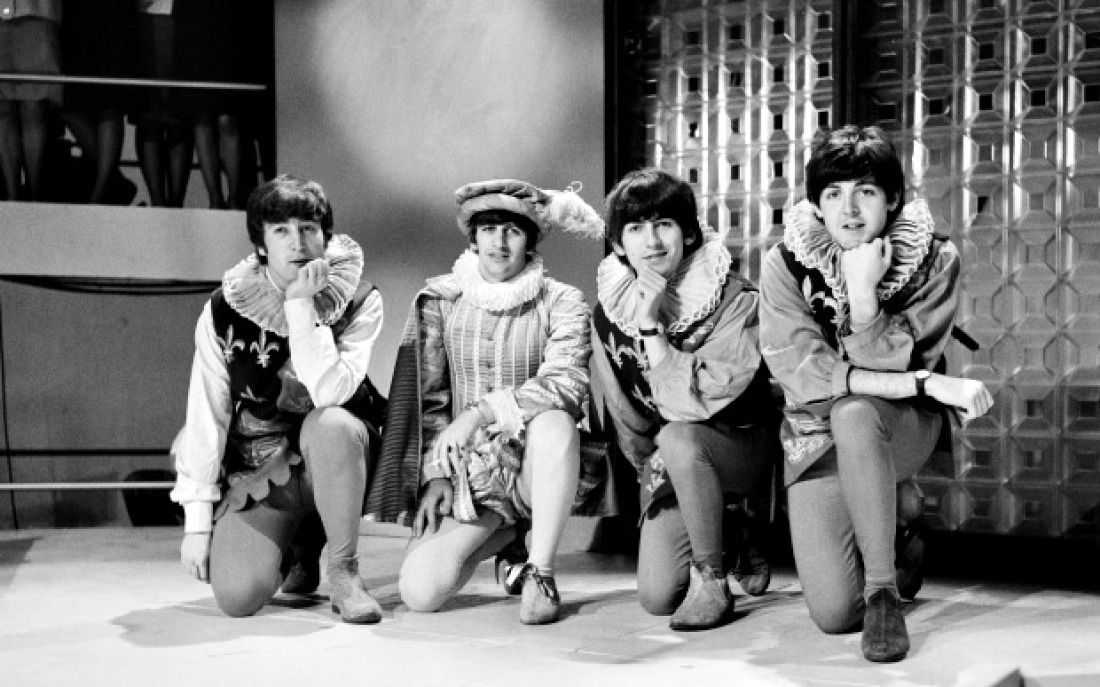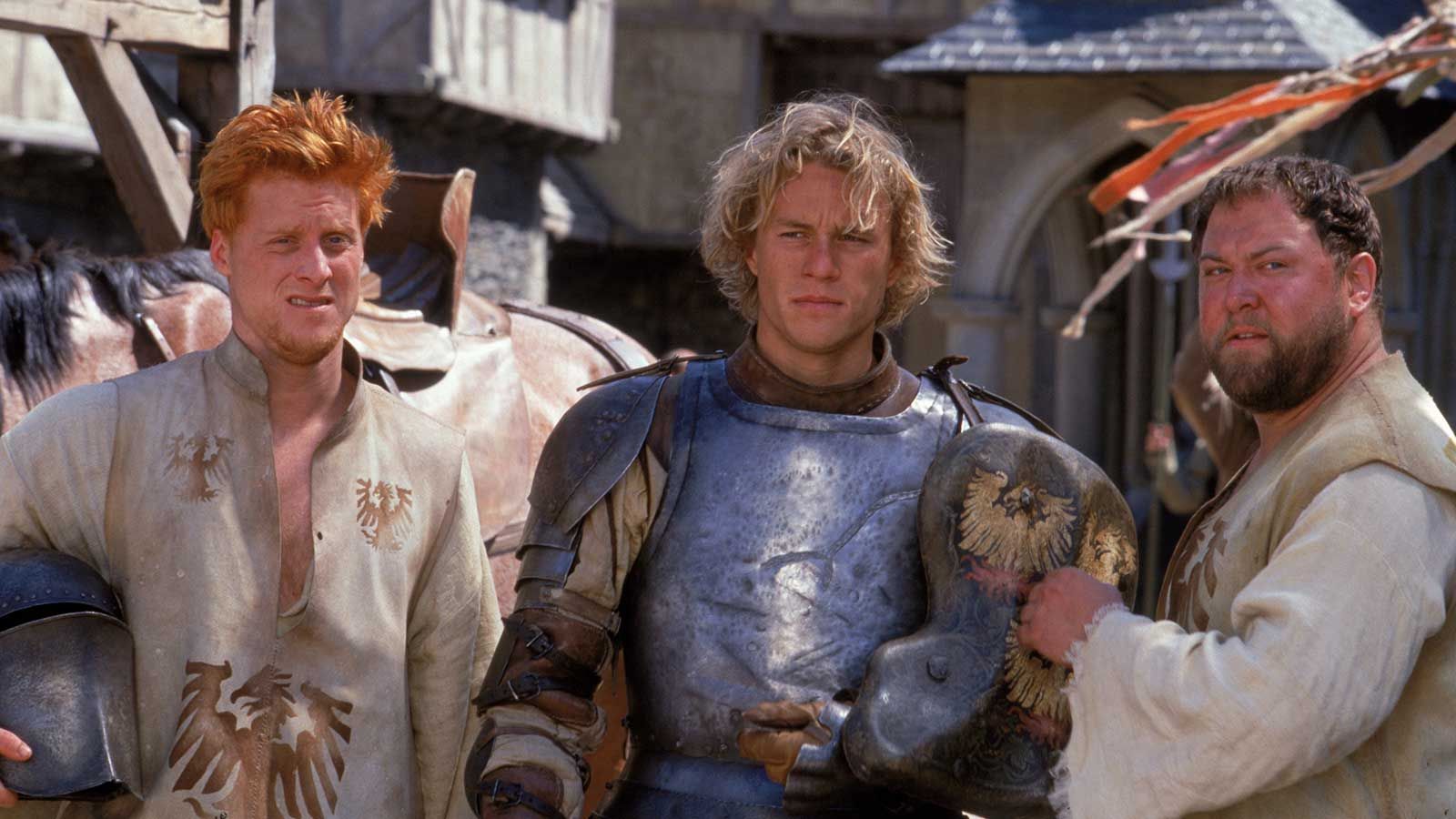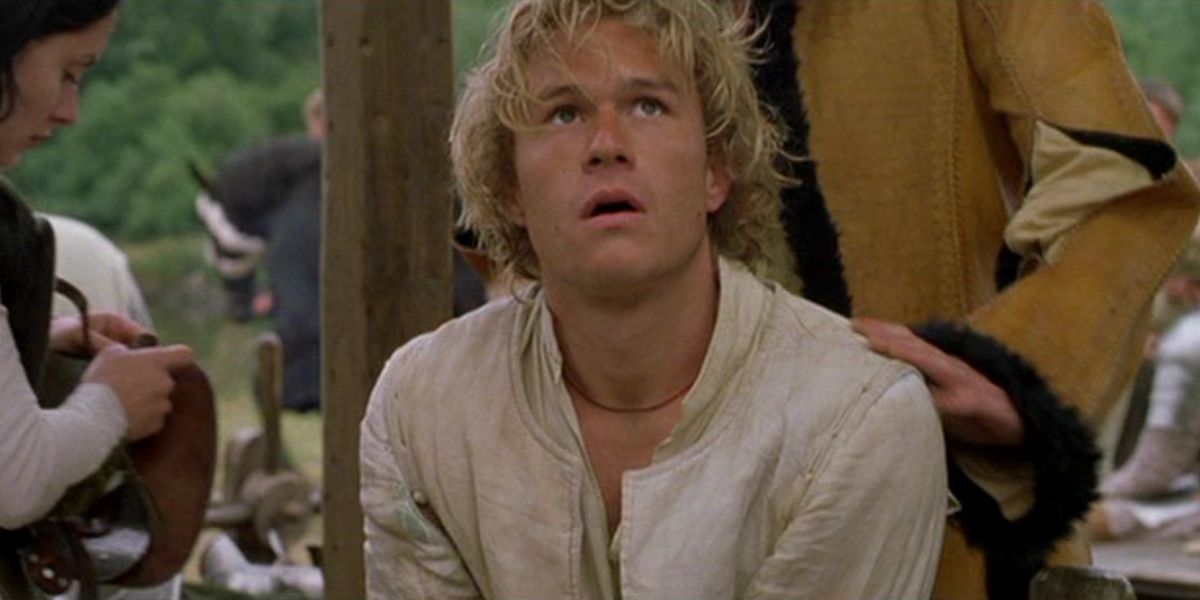A Knight's Tale is a difficult movie to define. Is it a period piece or a rock musical? Is it a coming-of-age adventure or a romance? Is it historical fiction or a sports movie? The answer to all these questions is "yes," as writer-director Brian Helgeland made a film that bent every genre it touched.
The film stars Heath Ledger as William Thatcher, a peasant whose father apprentices him to a wandering knight, Sir Ector. When the knight passes away, instead of finding a new job, William and his fellow squires (played by Mark Addy and Alan Tudyk) set up a deception. William pretends to be a knight, using his skills learned from his former master to become the greatest jouster in the land.
Along the way, they meet a colorful cast of characters including the famous writer Geoffrey Chaucer (Paul Bettany), the stubborn blacksmith Kate (Laura Fraser), the lovely Lady Jocelyn (Shannyn Sossamon), and the villainous Count Adhemar (Rufus Sewell). This cast came together in a big way, and their camaraderie is obvious every second they're on screen. That doesn't mean there weren't crazy details to be found behind the scenes, however.
This list counts down things you may never have known about the making of A Knight's Tale, from the actors' first interactions with one another to the way Columbia Pictures tried to market it. It can be hard separating fact from fiction with this movie, so we'll be sticking to what we know for sure.
These are 20 Crazy Details About The Making Of A Knight's Tale.
A superhero and supervillain on the same team
One constant for actors is realizing they'll never be able to predict where their colleagues will end up. Who could have predicted that two of the main actors in A Knight's Tale, Heath Ledger and Paul Bettany, would land marquee roles in two separate superhero cinematic worlds?
Heath Ledger, as anyone who has seen a movie before will be able to tell you, went on to play The Joker in The Dark Knight in 2008, the role that would win him a posthumous Oscar for Best Supporting Actor. Bettany, meanwhile, would stray to the heroic side of things, voicing JARVIS and then playing Vision in the Marvel Cinematic Universe.
Also worth noting: Alan Tudyk would voice various DC characters in animated movies, and play Bruce Wayne's cousin in Powerless.
They filmed for 4 months straight in a foreign country
A Knight's Tale was shot all on location in Czechoslovakia, with the whole cast present and two units shooting simultaneously. The cast and crew didn't just have a long flight to get there-- the work didn't stop when they started shooting.
Principal photography lasted for more than four months, and the actors described the daily schedule as intense.
In an interview, Paul Bettany said that the four and a half months were grueling, but still fun thanks to the attitude and atmosphere. This is a good thing, since Bettany was a British actor working on a film with an American actors' guild, which he says was like being "an eighteenth-century pit horse."
This sentiment was echoed by other actors: filming may have been a lot of work, but it was enjoyable thanks to the people.
Jousting's secret ingredient: pasta
Movies are always looking for ways to make action as visually impactful as possible, and sometimes that means prop designers have to get crafty. Director Brian Helgeland wanted the jousters' lances to explode all over the screen every time they broke, and so the creative team came up with a solution: linguine.
The lances were made with hollow insides, and so the filmmakers put extra splinters in there.
They realized that uncooked pasta would basically look like wooden splinters, so they added dry linguine noodles to the lances.
Helgeland noted in an interview that originally they were going to CGI the splinters in, so they saved money on it - and it probably looked better anyway.
The studio tried to cut the end-credits scene
Fans of A Knight's Tale who watched all the way to the end know that after the credits roll, there's a half-minute scene with William's team (Chaucer the herald, Kate the Blacksmith, and Roland and Wat the squires) where they have a farting contest.
This scene was improvised, suggested by the actors themselves, who had grown to be quite friendly. Director Brian Helgeland had to fight to keep it in the movie, however, as Columbia executives didn't like it one bit.
After a protracted battle of wills, the director was allowed to keep the end-credits scene, and rightfully so. After all, who wouldn't want their company logo next to an extended fart joke?
None of the actors did their own stunts
Sometimes being willing to do your own stunts doesn't cut it. Heath Ledger was a hot commodity in 2001, and the studio didn't want to see him get hurt. Since A Knight's Tale was filming real jousting - the most they did for safety was padding and easily breakable lance - it was simply too dangerous for their stars to take part.
None of the actors were allowed to do their own stunts, despite some of them wanting to.
In an interview, Ledger said that he eventually understood the logic behind this decision, after seeing the grisly injuries suffered by the stuntpeople. He says he saw one jouster get his jaw "ripped back," necessitating 15 stitches, and was back riding just two weeks later - and he received the same injury again.
The jousting was real
The actors may not have been doing the jousting, but that doesn't mean the jousting was faked. Director Brian Helgeland and his stunt people originally thought it would be too dangerous to actually joust, so they tried to come up with ways to fake it, involving tricky camera angles and CGI, but each solution looked worse than the last.
Eventually, they turned to one another and realized the only way to make the movie work was to film real stunt people doing real jousting. The lances were blunted and the actors had padding, but aside from that, it's all 100% genuine.
Ledger even recalled that the producers brought in a professional jouster from Las Vegas to help the stunt people and actors train on horseback.
Chaucer was written for Paul Bettany
Before A Knight's Tale ever went into production, Brian Helgeland and Paul Bettany had actually tried to make a previous movie together. Titled The Sin Eater, the movie halted when Fox said the studio didn't want Bettany. Helgeland insisted, and it all fell apart.
When Helgeland was given greater creative control for A Knight's Tale, Bettany was the first person he called.
The role of Geoffrey Chaucer, famous English writer, was written specifically for Bettany, despite the fact that Bettany had never even done a comedic role before. Bettany recalled in his interview with Elias Savada that he was flattered by the choice. The phone conversation consisted of Helgeland asking him if he wanted to play Chaucer, and Bettany saying "yes."
The tipsy "rehearsal"
Rehearsals are important, but sometimes parties are even more so. Writer-director Brian Helgeland insisted to the studio that he get his actors to the shooting location two weeks ahead of the production schedule so they could go over the script and get to know one another. They did the latter, but not the former.
Instead of rehearsing, the actors recall a two-week period of partying without looking at the script once. Bettany said that they "truly did drink a mesmerizing amount of alcohol" in the process, but it actually worked out well: the actors came together as a group and were friendly the whole time. There were no big fights among the cast, so clearly Helgeland was on to something with this method.
Bettany's preparation
A Knight's Tale isn't exactly known for being the most historically accurate film, as Brian Helgeland was more interested in engaging modern audiences and creating something unique than being a historian. It still might surprise some fans to learn that Paul Bettany, who played Geoffrey Chaucer, never read any of Chaucer to prepare for the role.
Instead, Bettany ignored that and asked Helgeland about his vision for the character.
Helgeland said he wanted Bettany to be like a WWE announcer, but Bettany refused to watch any WWE.
Instead, he forced the director (not to mention his friend) Helgeland into doing an impression of Vince McMahon, and he based his performance on that. Bettany would later gleefully recall this in interviews, as he relished watching the awkward director perform.
The fake film reviewer
This one isn't specific to just A Knight's Tale, but it's a crazy detail nonetheless. In 2001, an unnamed Sony employee started sending the higher-ups at the company quotes from a film reviewer named David Manning, from the Ridgefield Press, a real periodical in Connecticut.
The problem? Manning himself wasn't real.
Manning's quotes were used to promote four Columbia pictures, including A Knight's Tale. The fake reviewer said Heath Ledger was "this year's hottest new star!" on the poster. This article notes that even among Hollywood executives, this was shocking and quickly stopped.
It was never revealed who exactly started the Manning charade, but it went unnoticed for months-- the Ridgefield Press itself never saw the quotes.
The leads were both newbies
With the reputation Heath Ledger has today, it can be difficult to remember that he was once a fresh-faced unknown. This was a distinction he shared with Shannyn Sossamon, the female lead from A Knight's Tale.
For Ledger, it was his first starring role. For Sossamon, it was her first film role of any kind.
In a lot of ways, A Knight's Tale was a gamble taken by the studio to believe in the talents of a group of young artists to produce something unique.
To those of us watching now, it may seem like A Knight's Tale has a cast full of well-known actors, but in 2001, they were nobodies. It speaks to the talents of the casting director that they found untried actors who played their roles so well.
Shannyn Sossamon had regrets
Shannyn Sossamon, as we've already mentioned, was new to the industry when she filmed A Knight's Tale, and starring in a major motion picture at the age of 23 carries a lot of pressure. So much so that Sossamon herself, when asked what advice she would give her younger self, said that she wasn't at all ready for stardom.
Sossamon says in the interview with Details that she wasn't ready when she was cast, and had to learn how to navigate the industry with each successive movie. She also said that she would try to be less hard on herself, but her main suggestion to her younger self would have been to stay in school rather than launch into the career, so she would have somewhere to fall back and regroup.
The squire who became a Game of Thrones king
William Thatcher had a memorable cast of characters around him, none more so than Roland and Wat, his loyal squires. These two lovable characters were anything but regal, but their actors, Mark Addy and Alan Tudyk, went on to play kings.
Game of Thrones fans will recognize Addy's face, or at least the part of it that isn't covered in beard, as King Robert Baratheon the ruler of the Iron Throne and Ned Stark's old friend in the first season.
Meanwhile, Alan Tudyk's extensive voice acting career includes a role in Wreck-It Ralph, where he portrayed King Candy. His voice won't be as easy to recognize, as Tudyk has a talent for wacky voices that sound nothing like his own.
Jousting continuity errors
We could also have titled this entry "Jousting Is Hard, You Guys." Judge A Knight's Tale all you want, but no other movie has filmed jousting as excitingly as it did, so we can forgive some continuity mistakes.
There certainly were plenty of them, from costumes changing mysteriously between shots to actions happening twice in a row.
The thing is, it was really hard for filmmakers to get the shots they needed during jousting because it's not exactly a common thing to film - not to mention safety for the stunt people was a constant problem.
This explains why William's shirt/armor would shift and Adhemar's visor would go up and down and so on, to the point where about half of the overall continuity mistakes in the film come from just the jousting scenes.
Ledger met Heather Graham during filming
The love lives of young Hollywood stars will always fill the pages of tabloids around the world, and Heath Ledger is no exception. Thus, we have sources that reported on Ledger's love life while in Czechoslovakia, where he met actress Heather Graham.
Graham was in Prague shooting From Hell while Ledger filmed A Knight's Tale.
In what would become something of a trend for Ledger, Graham was several years older than him, and possibly more interested in settling down than he was. Regardless, the relationship didn't last terribly long, as Ledger moved on to Naomi Watts and Michelle Williams in succession. Still, not too shabby to film your breakout role and get a celebrity girlfriend at the same time.
Chaucer's wife was cut from the film
Even some fans of the film may not know this, but originally, actress Olivia Williams was supposed to be part of A Knight's Tale.
Williams, known for roles in films like The Ghost Writer and TV shows like Dollhouse, would havebeen Geoffrey Chaucer's wife in the film, but her scene was deleted from the final cut.
The deleted scene, which appears in the DVD's special features, has Chaucer and his wife in bed, having met up after his travels on the road with William and company. It's a funny little scene where Williams' character voices her approval of her husband's traveling companions, but it isn't really essential to the plot, so we can see why it was removed.
Paul Bettany got laryngitis
If you've seen A Knight's Tale, you know that Paul Bettany's character, Geoffrey Chaucer, spends much of his time shouting. Chaucer masquerades as the made-up knight Ulrich von Liechtenstein's herald, and thus addresses the nobles and peasants in attendance before every jousting match.
This role ended up being pretty strenuous on poor Bettany's vocal cords, as he contracted laryngitis near the end of filming. Specifics of exactly when and how severely the inflammation came on are sparse, but the fact that Bettany put so much into the role that he damaged his own larynx has become something of a legend for fans of the film.
It probably didn't help that, by his own admission, Bettany was overworking himself and drinking a ton of Czech beer at the same time period.
The "literary" references
A Knight's Tale is most famous for its use of classic rock music in a medieval setting, in place of the typical orchestral score that would accompany such movies.
There are references to rock groups like the Beatles scattered throughout the film, but not all the references are to modern music.
There are several bona fide nods to classic literature-- the film's use of epigrams is one, as is the scene where Jocelyn tells William to lose (and then win) to prove his love. Epigrams are used throughout medieval literature.
Jocelyn's scene is a direct reference to the story of Lancelot and Guinevere.
That's without mentioning the fact that Geoffrey Chaucer himself appears-- these homages are numerous, almost as noticeable as the rock and roll.
The extremely specific time frame
A Knight's Tale is known first and foremost for its anachronisms; the moments in the films that use technology, slang, or music completely at odds with the time period. So it may surprise you to learn that the film is set in an extremely specific time frame, according to writer-director Brian Helgeland.
It's set precisely in the year 1372, though this date never appears in the film itself. This is also why music from the 1970s makes an appearance, because it's still "the seventies."
The 1370s were an eventful time in the real Geoffrey Chaucer's life, so that probably has something to do with the choice.
However, this doesn't mean there weren't some mistakes made, as at one point Count Adhemar is shown at the Battle of Poitiers, which happened in 1356.
All the anachronisms were intentional
In case you had any doubt that the anachronisms were all deliberate, use an example that might look like a mistake, but was actually completely intentional, and fairly expensive.
Viewers with sharp eyes might notice that when the film's setting moves to London, in one shot the London Eye is visible.
This would seem to be an error, as the Eye is a ferris wheel built in 1998.
As explained in the DVD commentary, the London Eye that appears in the movie is a model made out of wood.
You'll notice its silhouette isn't quite a match for the actual Eye, since it was put in as a joke by the filmmakers. It was a costly joke-- apparently the model cost several thousand dollars to build.
---
Do you have any other trivia to share about A Knight's Tale? Leave it in the comments!

